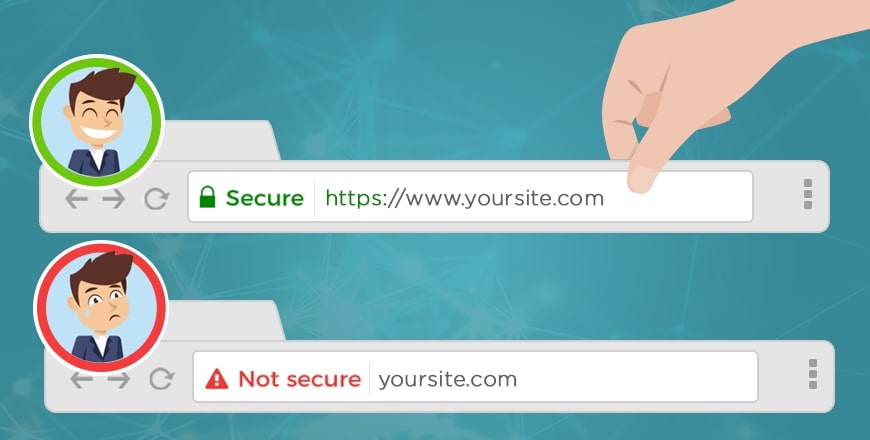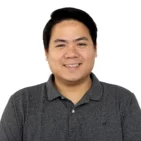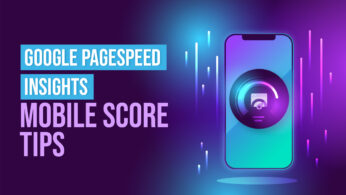
Escape the Not Secure Label: Switch to HTTPS
Switching from HTTP to HTTPs
Previously, Google announced that it’ll be more determined to pursue and advocate for an increased safety standard with Chrome 62. This is no surprise since security has always been one of Google’s priorities – as it should be. To give you a brief overview: HTTP stands for Hypertext Transfer Protocol, HTTPS means Hypertext Transfer Protocol Secure, and Chrome 62 includes a feature that acts as Google’s way of telling website owners to transition from HTTP to HTTPS, and a clear not secure label for websites still in HTTP.
It looks like a subtle difference: a humble letter added to an already existing acronym – so why is this little update so important?
Why It Matters
Being Secure signifies that a Security Sockets Layer (SSL) protects your website. The SSL is what keeps all your private information – like your name, passwords, and banking details – safe from any third party security infringement. It uses encryption, a process that converts your data from regular text into code.
HTTP doesn’t encrypt your data, making it more vulnerable to attacks. This is what makes the S in HTTPS so significant. By being secure, third parties wouldn’t be able to use the data they acquire. This is mainly because unlocking, accessing, or reading the encrypted data will require a decryption key.
Let’s cite an instance where this could be particularly useful. Recall a time when you’ve connected to a public (and most likely unencrypted) Wi-fi network and asked yourself: Am I safe? Now, you have one extra security layer to counter a hacker’s most commonly used techniques. Namely: fake hotspots, man-in-the-middle attacks, malware, and sniffing.
After Chrome 62’s Launch
Any user who inputs data into an HTTP page will be notified that the site is Not Secure. This notification will appear through a label in the address bar. This includes Incognito mode. This is Google’s explicit warning that if you input your data into this non-secure website, you increase the chances of your data being compromised. Even during this time it was essential that website owners consider transitioning from HTTP to HTTPS.
Chrome 68’s Release
Any web page that doesn’t use an SSL, even if it doesn’t collect any sensitive information, will have Not Secure labels. These gray labels are seen accompanied by equally gray information icons like this: ⓘ. In contrast, HTTPS or Secure sites will be marked with a padlock icon before its URL. Nevertheless, Chrome 69, now in its beta channel, will start removing the Secure labels on HTTPS sites. This will be done to direct users into slowly acknowledge these unlabeled sites as Secure by default – encouraging them to eventually embrace Secure sites as the norm. Following it is Chrome 70 which is coming this October. It will highlight HTTP sites further by coloring both the Not Secure label. It also colors the corresponding badge into a bolder red whenever users fill out forms on their pages.
Most users won’t stay on sites after they see a Not Secure label – and they certainly won’t go through with any transactions knowing full well that we live in a digital age where information is basically as valuable as monetary currencies. Think of it like choosing a bank. You’d want to pick one that’s reliable, safe, and secure. You wouldn’t trust your personal and financial data with just anyone – certainly not with sites that don’t guarantee privacy and confidentiality. Your clients feel the same way.
Thus, if you haven’t transitioned from HTTP to HTTPS yet, now’s high-time to do so.
The Benefits
Use an SSL and prevent your site from getting a Not Secure label from Google and to transition from HTTP and nab that HTTPS title. Doing so also brings an opportunity to build trust between you and your site’s visitors. Without the Not Secure warning, your clients will recognize that you care about their safety. This acts as a seal of approval that your brand operates to strictly follow safety and security measures. This ultimately helps lead them to conduct business with your company.
Additionally, it just became one of Google’s ranking factors in 2014. Currently, it is only a lightweight signal and tiebreaker in case two search results have the same rank. Still, Google may strengthen it soon in order to further emphasize the need for improved web security.
It also favors you and your clients by counteracting phishing. For example, one of your loyal customers clicks on a link from an email they received. It disguises as an advertisement for one of your products or services. However, they ultimately end up on an identical page labeled Not Secure. When they know that your site is Secure, they will recognize it as a trick and navigate away.
Transition from HTTP into HTTPS and experience all of the benefits that come with it! You not only protect your site and your clients from security violations, you also contribute to the Internet’s overall safety. Let our experts help you with that. If you’re looking for a dedicated web developer to protect your site and guarantee your clients’ security, leave us a message by using this form!















Comment 0